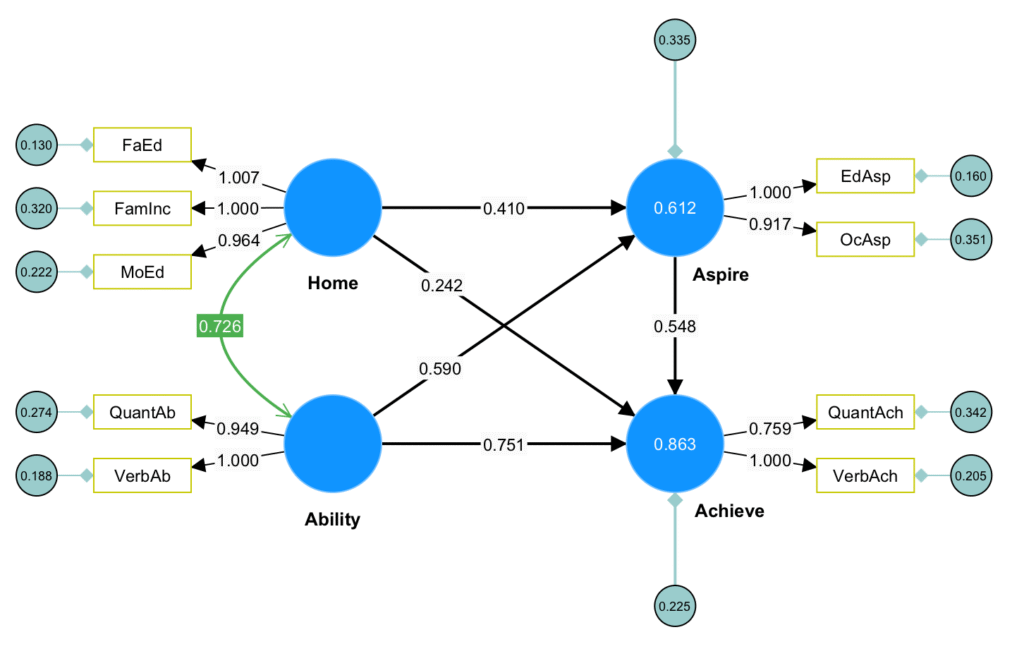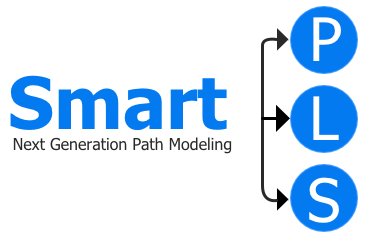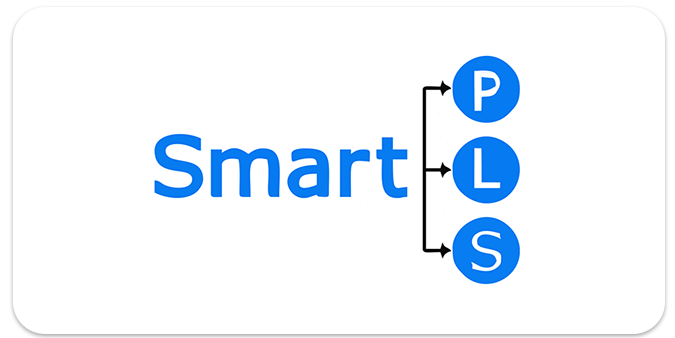SmartPLS: Comprehensive SEM Software for Modern Research
Why are researchers switching to SmartPLS
SmartPLS is structural equation modeling software designed specifically for academic research using partial least squares path modeling. Researchers can build visual models by dragging variables onto a workspace and connecting them with paths. The software supports PLS-SEM, weighted PLS-SEM, consistent PLS-SEM, and traditional regression approaches. You can examine measurement models through confirmatory factor analysis, test mediation and moderation hypotheses, and conduct covariance-based SEM when needed.
Why SmartPLS
Research Efficiency:
Publication Readiness
Methodological Flexibility
Dissertation-Friendly
Research Capabilities in SmartPLS
Many academics have moved from AMOS, Mplus, and LISREL to SmartPLS due to practical research considerations:
PLS-SEM for variance-based modeling
PLS-SEM addresses common research challenges when your sample size is limited or your data shows non-normal distributions. This variance-based approach proves especially valuable in exploratory studies where theoretical frameworks are still emerging, allowing you to test complex models without meeting the restrictive assumptions required by traditional covariance-based methods.
CB-SEM that works like AMOS
The covariance-based SEM functionality replicates what you’d expect from AMOS but eliminates the syntax complications and interface problems that slow down research progress. You can conduct the same confirmatory analyses that CB-SEM requires while working within a modern, intuitive environment that doesn’t force you to debug code.
Standard regression analysis
Execute ordinary least squares regression using construct scores derived from your SEM model, providing a useful validation check for your structural findings. This dual-approach capability lets you compare PLS-SEM results with traditional regression outcomes within the same study, strengthening the robustness of your conclusions.
Factor analysis
Assess measurement model quality through confirmatory factor analysis before proceeding to hypothesis testing. The program calculates factor loadings, composite reliability, average variance extracted, and discriminant validity measures automatically, ensuring your constructs meet psychometric standards before you interpret structural relationships.
Bootstrapping for significance testing
Generate empirically-derived confidence intervals and significance tests through resampling procedures that work regardless of your data distribution. SmartPLS runs bootstrap samples efficiently, typically completing 5,000 samples in minutes, giving you reliable statistical inference even with small samples or skewed variables.
Multi-group comparisons
Test measurement and structural invariance across different subgroups in your sample, such as comparing model relationships between different demographics, cultures, or experimental conditions. The software provides clear output showing where group differences occur and calculates effect sizes for meaningful interpretation of group variations.
Higher-order constructs
Model multidimensional constructs where your main variables consist of multiple sub-dimensions, common in organizational behavior, marketing, and psychology research. SmartPLS handles both reflective and formative second-order models, allowing you to capture construct complexity while maintaining parsimony in your theoretical framework.
Who Uses SmartPLS?
Academic Researchers Across Disciplines
Doctoral Students and Dissertation Research
Industry Research Teams
International Research Communities
Journal Editors and Reviewers
Research Consultants and Statistical Service Providers
Government and Policy Researchers
Interdisciplinary Research Teams





System Requirements
- Storage: Approximately 200 MB of available hard disk space
- RAM: At least 2GB
Supported Operating Systems
- 64-bit Windows
- 64-bit MacOSX from Big Sur (11.x) to Sequoia (15.x)
- 64-bit Linux Ubuntu
Note: For users with older MacOSX systems (<11.x), we provide SmartPLS 4.0.9.6 as a fallback version until the end of 2024. Please be aware that this version cannot be updated to the latest SmartPLS 4 version due to compatibility issues.
SmartPLS Pricing
Pricing for Single and Research Teams of All sizes | Save 50% as Academic User
SmartPLS | Blogs and Articles
SmartPLS FAQs
What´s new in SmartPLS 4 ?
Report management has improved substantially with the ability to save your analysis reports and reopen them later, addressing one of the most common user complaints about earlier versions. The new side-by-side comparison feature makes it much easier to compare different models or approaches within the same study by opening multiple reports simultaneously. Chart customization is now extensive - you can change colors, sizes, fonts, and other visual elements, then save these preferences as your default settings. New analysis methods include endogeneity testing through Gaussian copulas, necessary condition analysis with significance testing, regular regression models, PROCESS-style mediation analysis with bootstrapped confidence intervals, and complex moderation including three-way interactions. The program now includes dozens of example projects built right into the software, so you can practice with different techniques even if you don't have your own data ready. Support for 32-bit Windows systems has returned after being dropped in version 3, and there's an extensive library of video tutorials specifically created to help users learn the new features and navigate the interface changes.
Migrating SmartPLS 3 Projects to SmartPLS 4
Here's how to do it: First, download SmartPLS 4 from the official website and install it on your computer. When you launch the program for the first time, pick your license type and create a new workspace folder. To bring in your old projects, go to File > Import Projects from the main menu, then navigate to your SmartPLS 3 workspace folder (usually found at /users/username/smartpls_workspace). Select which projects you want to import. If you see any data files showing up in red after import, just open them and click "Update" to fix the connection. The whole process takes about 2 minutes according to their demonstration video. James Gaskin has also created a helpful tutorial that walks through the initial setup steps for users who want additional guidance during the transition.
Reasons for Different Results
Check Your Data Setup First
If your data file shows up in red when you open your old project, that means something's wrong with the file setup. Click on it and check that the delimiter and other settings match what your data actually looks like. Missing values work differently now too. The old version used things like -99 to mark missing data, but version 4 has a proper setup dialog where you tell it what those markers are. Make sure you're handling missing data the same way in both versions, or you'll get different results. Version 4 also knows about different types of variables - the old software treated everything like numbers, even things like gender that were coded as 0 and 1. Now you can tell it what type each variable really is, which changes how the math works.
Standardization and Binary Variables Changed
The biggest difference is how results get standardized. Version 3 always standardized everything automatically, but version 4 gives you choices - "Standardized," "Unstandardized," or "Mean centered." Pick "Standardized" if you want results that match the old version. Binary variables (like yes/no or male/female) work completely differently now. The old software would standardize these too, which made the numbers hard to understand and meant you had to convert them back to something meaningful. Version 4 keeps binary variables in their original 0/1 form, so when you see a coefficient, it actually tells you what happens when someone changes from category 0 to category 1. This is much more useful for interpretation. If you really want the old behavior back, you can manually set your binary variables as "metric" in the data setup, but the new way is better for understanding what your results actually mean.















